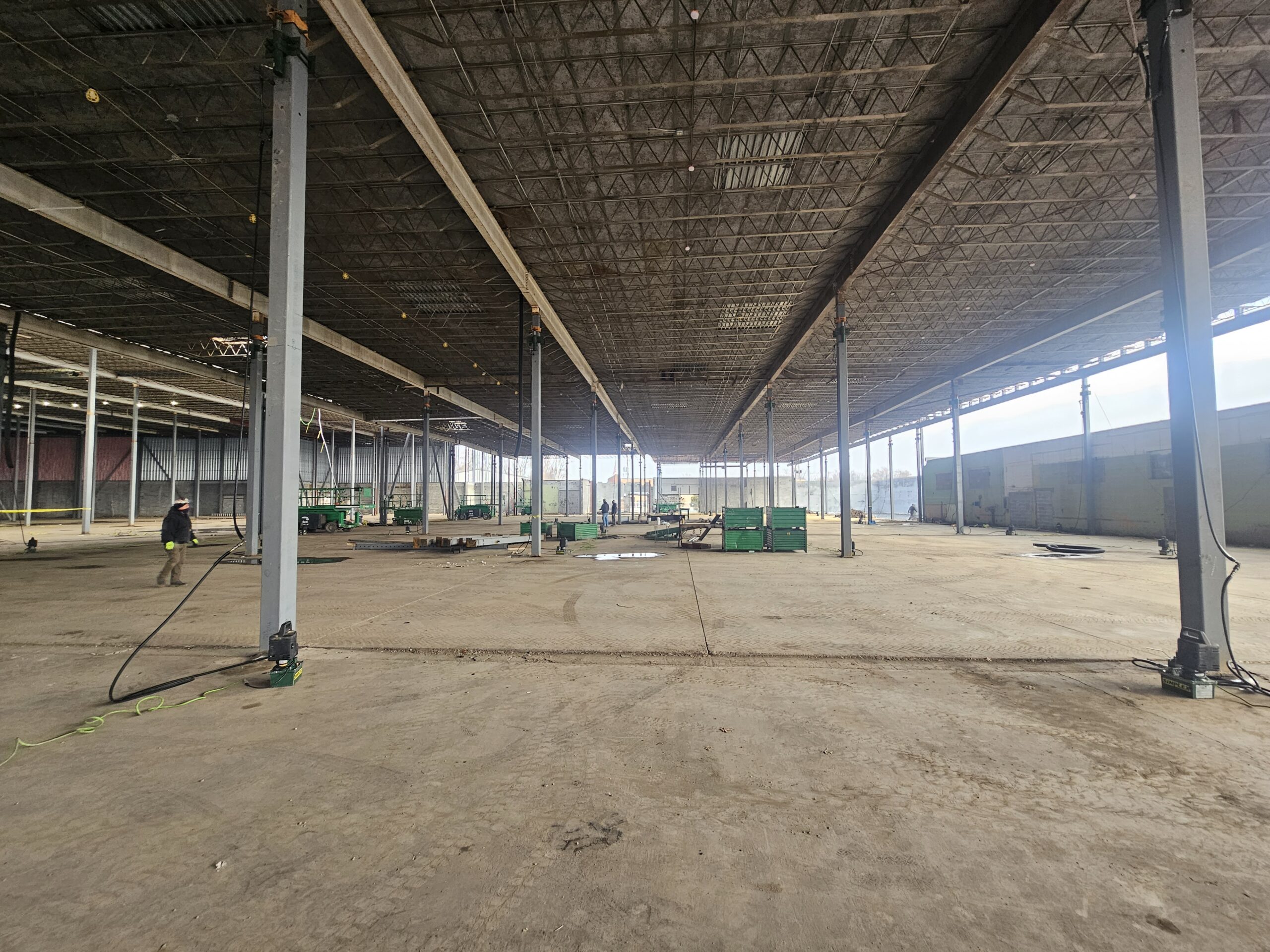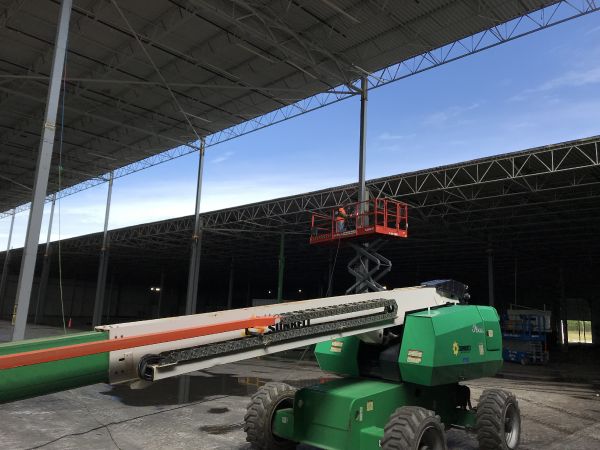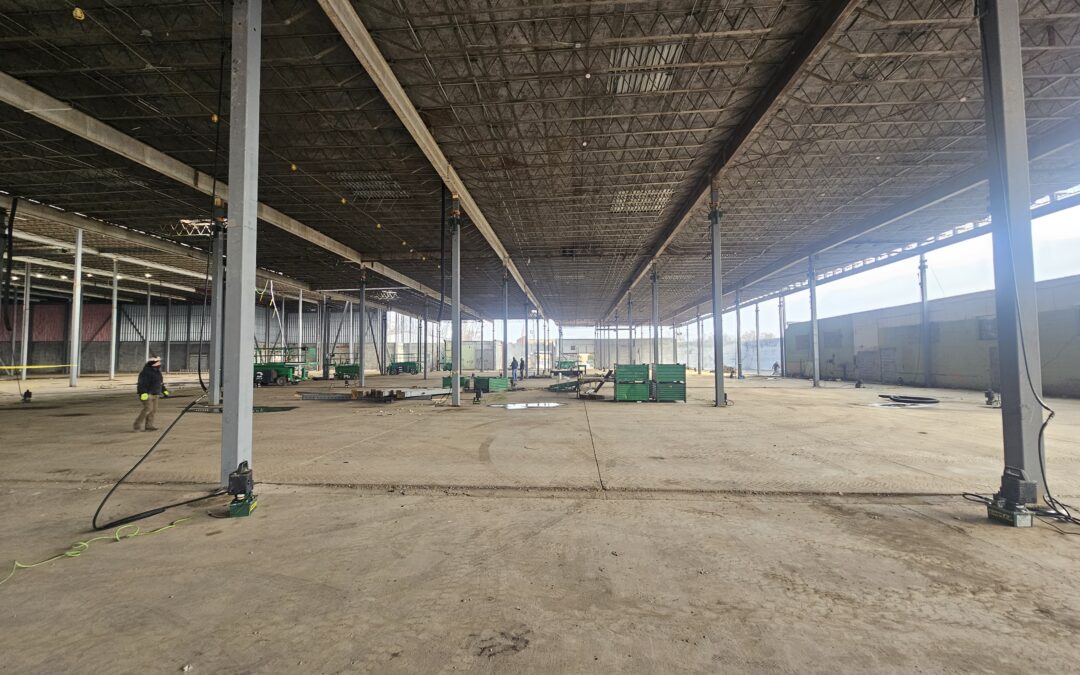Elevating Urban Logistics: How Roof Lifting Alleviates Last-Mile Delivery Strains.
The last-mile delivery challenge has long been a critical puzzle piece for e-commerce and omni-channel sellers that have exploded in number over the last several years, especially in bustling urban environments. As cities grow denser and consumer demands evolve to require more next-day and same-day shipping, the pressure on firms’ last-mile workflows is intensifying and resulting in a slew of new pain points.
Urban congestion, escalating customer expectations, scalability issues, and the pressing need for sustainable solutions stand out as significant hurdles. LIFTEX offers an innovative solution for improving capacity and efficiency for local distribution facilities that are finding it harder to deal with soaring property values and congested streets in crowded areas. Roof lifting on existing properties presents a promising avenue to address these challenges head-on.

Roof Lifting Tackles Urban Congestion.
One of the most immediate impacts of roof lifting is the potential relief it offers from urban congestion. By expanding vertically, logistics facilities can enhance their operational capabilities within the same footprint and remove the need for any additional ground space.
Optimizing for vertical expansion is crucial in urban settings where space is at a premium and traffic congestion is (and will remain) a persistent issue. By multiplying the amount of usable space with a roof lift, building owners can greatly increase storage capacity and avoid the painful endeavor of procuring and developing new space.
More Space Helps Meet Customer Expectations.
In an era where expedited and same-day deliveries are becoming the norm, customer expectations for fast and reliable deliveries are higher than ever.
One of the main ways that businesses are able to achieve consumers’ lofty standards is by incorporating advanced technology and optimized floorplans into their distribution centers, allowing for increased inventory volume at more locations along the last-mile supply chain.
Roof lifting allows the space for this inventory as well as advanced sorting and automation technologies within existing facilities, leading to faster order processing times and more efficient handling of goods, especially in peak demand periods.
Getting products into the hands of the consumer as fast and with as little overhead as possible is paramount in driving a successful e-commerce business. The owners of warehouses and distribution centers will find they are able to more easily secure long term contracts with e-commerce tenants looking for the right space that can house all of their operations within.
With more clear height than many of the shorter properties heading for obsolescence, a product storage facility with a lifted roof stands to attract the most attention from high-value clients looking to scale their operations.
Scaling with Demand.
There’s little question that e-commerce will continue its massive surge in popularity and adoption across most major industries. In doing so, scalability becomes a pivotal concern for brands’ logistics operations.
Roof lifting offers a sustainable growth path by maximizing the utility of existing sites, and reducing the often massive costs that are accompanied by securing additional warehouse sites, especially the increasingly rare types in dense urban environments.
This approach enables brands to avoid taking the risk of sinking huge amounts of capital into warehousing facilities that they’re not prepared for yet, let alone the challenges associated with acquiring new land in constrained urban areas.
As these e-commerce and omni-channel companies begin to scale, they can increase usable space that fits their needs without feeling the pressure to find a space that offers far beyond their present needs – and their property budget.
Championing Sustainability.
Sustainability is no longer just a buzzword; it’s a business imperative with major implications with regulatory authorities, especially in the logistics sector.
In 2024 and beyond, businesses are doubling down on their sustainability efforts to better align with their business initiatives and government agency regulations. After all, customer expectations around eco-friendly business practices have never been higher.
Roof lifting aligns with sustainable development goals by enhancing the efficiency of existing structures, thereby reducing the need for new constructions and minimizing land use, waste, pollution, and the destruction of green space.
Roof lifting contributes to reduced vehicle emissions through optimized delivery routes and fewer trips, helping bring the environmental benefits full circle.
Last-mile warehouses and distribution center owners and managers can rest assured their roof-lifted property is at the forefront of environmental stewardship and serves as an excellent foundation for sustainability pledges.
Extra Capacity Can Help Improve Efficiency and Reduce Costs.
Roof lifting is the multifaceted solution to the biggest problems within urban last-mile logistics.
By addressing tight congestion, meeting and exceeding customer expectations, providing scalability, and supporting sustainability efforts, roof lifting is the complete package for environmentally-conscious businesses and portfolio managers.
As cities continue to grow and the demand for faster, more efficient deliveries rises, leveraging vertical space through LIFTEX Roof Lifting offers a path forward that is both innovative and pragmatic, ensuring the logistics sector can keep pace with the demands of the modern urban environment.

Need Help Making a Choice?.
LIFTEX pioneered the commercial roof lift, helping businesses across the country earn more out of their existing space.
If your team is looking for options or simply have questions about roof lifting, contact our team of roof lifting experts today!
Explore your options today – call LIFTEX !
GET A QUOTE.
For a quick estimate, fill out and submit the quote form. While a firm quote requires a site survey, we’ll provide an indicative figure. Attach documents, drawings, or images to the lead form for better assessment. Thank you!

